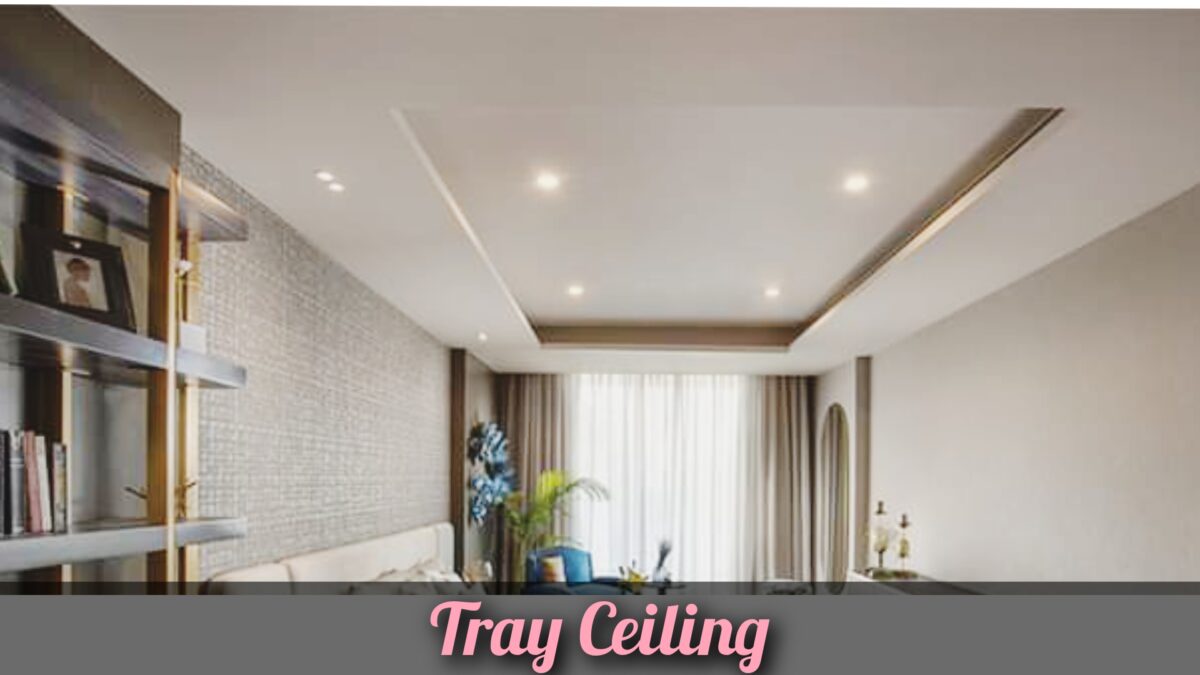Table of Contents
What Is A Tray Ceiling?
A tray ceiling, also known as a recessed ceiling, is a ceiling design characterized by a raised center section. This architectural feature creates the illusion of an inverted tray, hence the name.

The difference in height between the central and perimeter sections of the ceiling can vary from a few inches to over a foot, depending on the specific construction and room height.
Tray ceilings add visual interest to a space and can enhance the overall aesthetics of rooms such as dining areas, bedrooms, or living rooms.
What Is A Reverse Tray Ceiling?
A reverse tray ceiling is a type of architectural feature found in ceilings. It is a variation of a traditional tray ceiling where the central portion is recessed instead of raised.

In a reverse tray ceiling, the center of the ceiling is lower than the surrounding edges, creating a sunken or inverted appearance. This design element adds depth and visual interest to a room’s ceiling.
Tray Ceiling Design
Tray ceilings follow the shape of a room, with a drop-down border around the perimeter. They can have rectangular, square, oval, circular, or other shapes.
Tray ceilings serve both aesthetic and functional purposes. They hide ducting or other mechanical elements, such as wiring or plumbing, within the drop-down border.
In new construction, builders typically construct tray ceilings within the ceiling joists to maintain consistent ceiling height. However, when adding a tray ceiling to an existing room, the drop-down border may reduce headroom, so it’s best suited for rooms with ceilings higher than eight feet.
Contractors make standard tray ceilings with dimensional lumber and wrap them with drywall, which they can finish with or without trim. They often add crown molding for an elegant touch and can incorporate accent lights or recessed lights.
Tray ceilings offer various design possibilities, such as using contrasting or complementary colors, painting the recessed tray a deeper shade for added depth, and showcasing chandeliers or ceiling fans within the drop-down border.
For rooms with eight-foot ceilings, homeowners can achieve a faux tray effect by installing flat trim molding on the ceiling and painting the areas inside and outside the trim different colors to create a visual separation.
Coffered Ceiling Vs Tray Ceiling
Coffered ceilings and tray ceilings are two different styles of ceilings with distinct features:

Coffered ceilings have multiple recessed sections, while tray ceilings have one larger inverted area.
Coffered ceilings improve a room’s sound quality, while tray ceilings hide wires or plumbing in modern homes.
Coffered ceilings have many sunken parts, and tray ceilings have one big indented part. Coffered ceilings make the room sound better, and tray ceilings hide things in houses.
Advantages Of Tray Ceilings:
- Tray ceilings make rooms look beautiful and fancy.
- Tray ceilings make rooms seem taller and more spacious.
- Tray ceilings come in different styles and shapes to match the room’s look.
- Tray ceilings have special spaces where we can put pretty lights, like hanging lamps or colorful LED lights.
- Tray ceilings can hide the wires and pipes, making the room look neat and tidy.
- Tray ceilings can make the room quieter by reducing echoes and loud sounds.
- Having a tray ceiling can make the house worth more money if we want to sell it someday.
- Tray ceilings make the room look special and interesting with different levels and shapes.
- Tray ceilings can be painted or decorated with pretty patterns or designs.
- Tray ceilings can be made at different heights, so we can make the ceiling as high or low as we want.
Disadvantages Of Tray Ceilings:
- Tray ceilings can cost more money to build than regular flat ceilings.
- Tray ceilings are not good for rooms with low ceilings because they can make the room feel even smaller.
- Building a tray ceiling is difficult and needs special skills and careful planning.
- Tray ceilings have hidden areas that are hard to clean and need extra effort.
- Tray ceilings may not fit with all kinds of houses or designs.
Applications And Uses Of Tray Ceilings
- Living Rooms
- Dining Rooms
- Bedrooms
- Master Suites
- Foyers/Entryways
- Restaurants/Hotels
- Offices/Conference Rooms
- Retail Spaces
Faqs
Yes, tray ceilings can cost more because they involve extra work and special finishes.
Tray ceilings need more vertical space, so they’re not ideal for low ceilings. But there are other options available.
You can add molding, lighting, different colors, or decorations to make tray ceilings look nice.
Tray ceilings themselves don’t help with sound, but you can add special materials to absorb sound and improve acoustics.
Yes, but you need to check if the existing ceiling is strong enough and get advice from a professional.
